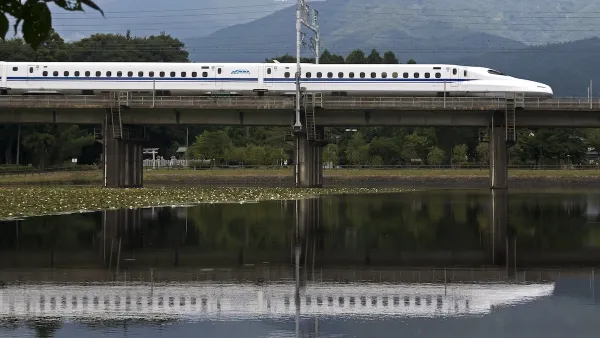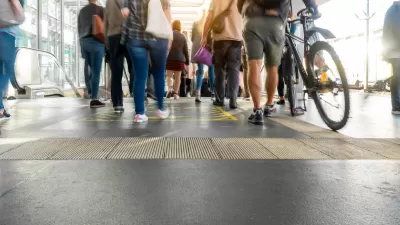Building megacities needs to be a multidisciplinary effort, according to architect and designer Sean C. S. Chiao.
Chiao works on megacity projects in China, and argues that the future of big city building needs to integrate many minds, and combine the efforts of private industry and the public sector.
"[U]rbanization is happening fastest in developing countries such as China, where I lead a team of designers, architects, engineers, and management-service specialists. China already has seven cities with more than ten million people-Beijing, Shanghai, Chengdu, Chongqing, Guangzhou, Shenzhen, and Tianjin-and Wuhan is quickly hitting the ten million–resident mark. For China, with its high population density and its land and water scarcity, megacity development is probably the most efficient option. Chinese megacities will be hubs for jobs, culture, leisure, and education, a model that will be radically different from the manufacturing-center model that forms the basis of many Chinese cities today. Chinese megacities will also, very likely, be hubs for small and medium-sized satellite cities that will spring up around them.
As an architect and urban designer, I believe that the right approach to both retrofitting an existing megacity or building a new one from scratch is holistic planning, with commitment flowing from both the public and private sectors. For Chinese megacities to function properly, there must be clear state policies on how to build and run them, as well as strict audits to ensure that the laws are followed. Rules and guidelines on how to build a "green" infrastructure-from buildings, bridges, transport networks, and sanitation systems to power grids, incentives for consuming power efficiently, and disincentives for energy abuse and malpractice must be mandated and put into practice. Continuous investments are required from both the government and the private sector."
FULL STORY: Planning China’s megacities

Planetizen Federal Action Tracker
A weekly monitor of how Trump’s orders and actions are impacting planners and planning in America.

Maui's Vacation Rental Debate Turns Ugly
Verbal attacks, misinformation campaigns and fistfights plague a high-stakes debate to convert thousands of vacation rentals into long-term housing.

San Francisco Suspends Traffic Calming Amidst Record Deaths
Citing “a challenging fiscal landscape,” the city will cease the program on the heels of 42 traffic deaths, including 24 pedestrians.

Defunct Pittsburgh Power Plant to Become Residential Tower
A decommissioned steam heat plant will be redeveloped into almost 100 affordable housing units.

Trump Prompts Restructuring of Transportation Research Board in “Unprecedented Overreach”
The TRB has eliminated more than half of its committees including those focused on climate, equity, and cities.

Amtrak Rolls Out New Orleans to Alabama “Mardi Gras” Train
The new service will operate morning and evening departures between Mobile and New Orleans.
Urban Design for Planners 1: Software Tools
This six-course series explores essential urban design concepts using open source software and equips planners with the tools they need to participate fully in the urban design process.
Planning for Universal Design
Learn the tools for implementing Universal Design in planning regulations.
Heyer Gruel & Associates PA
JM Goldson LLC
Custer County Colorado
City of Camden Redevelopment Agency
City of Astoria
Transportation Research & Education Center (TREC) at Portland State University
Jefferson Parish Government
Camden Redevelopment Agency
City of Claremont





























